Which two BGP features will result in successful route exchanges between eBGP neighbors sharing the same AS number? (Choose two.)
DE
A customer with an IPv4 only network topology wants to enable IPv6 connectivity while preserving the IPv4 topology services. The customer plans to migrate IPv4 services to the IPv6 topology, then decommission the IPv4 topology. Which topology supports these requirements?
A
DRAG DROP -
An engineer is designing an addressing plan for a small business using a single /24 network. Each department must have its own subnet. Drag and drop the subnets from the left onto the requirements of the department they fulfill on the right. Not all options are used.
Select and Place: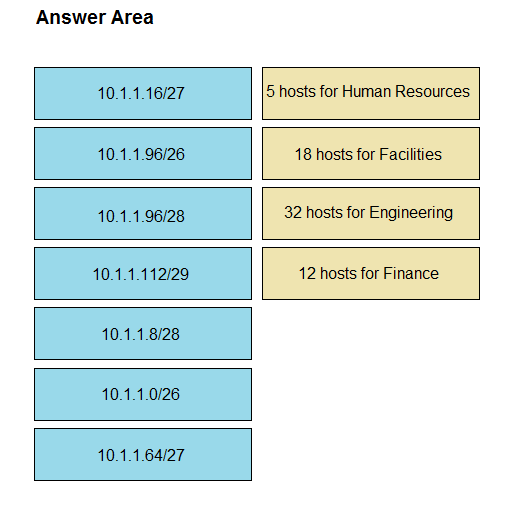

A company is running BGP on a single router, which has two connections to the same ISP. Which BGP feature ensures traffic is load balanced across the two links to the ISP?
B
Refer to the exhibit.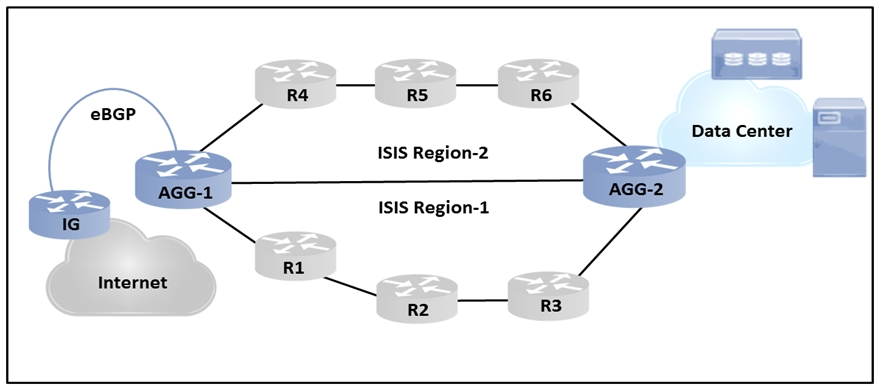
An architect must design an IGP solution for an enterprise customer. The design must support:
✑ Physical link flaps should have minimal impact.
✑ Access routers should converge quickly after a link failure.
Which two ISIS solutions should the architect include in the design? (Choose two.)
CD
Refer to the exhibit.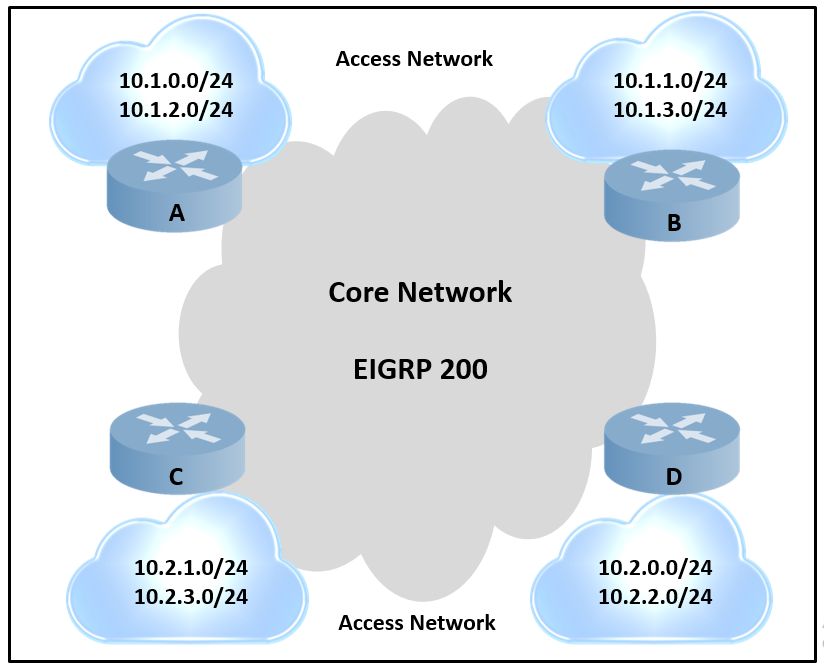
An engineer is designing a routing solution for a customer. The design must ensure that a failure of network 10.1.0.0/24, 10.1.2.0/24, 10.2.1.0/24, or 10.2.3.0/24 does not impact the core. It also requires fast convergence time during any link failover in the core or access networks.
Which solution must the engineer select?
C
Refer to the exhibit.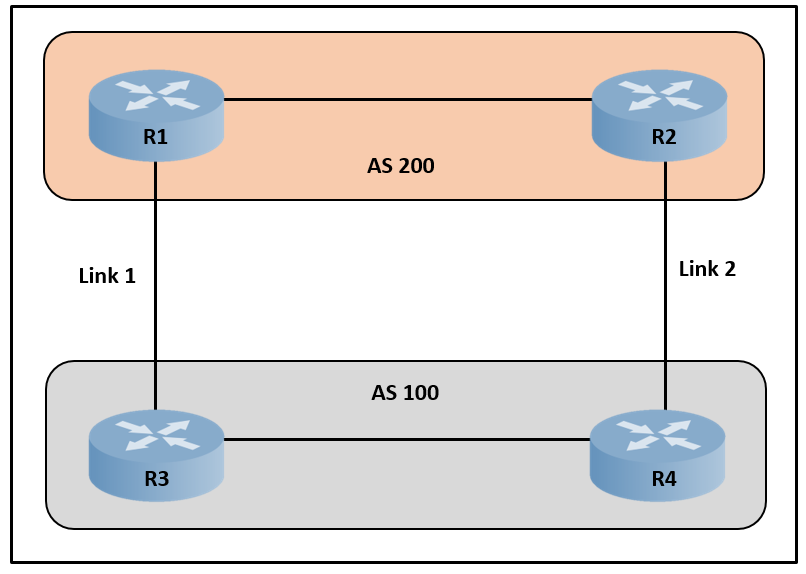
A network engineer is designing a network for AS100. The design should ensure that all traffic enters AS100 via link 1 unless there is a network failure. In the event of a failure, link 2 should function as the path for incoming traffic. Which solution should the design include?
D
Refer to the exhibit.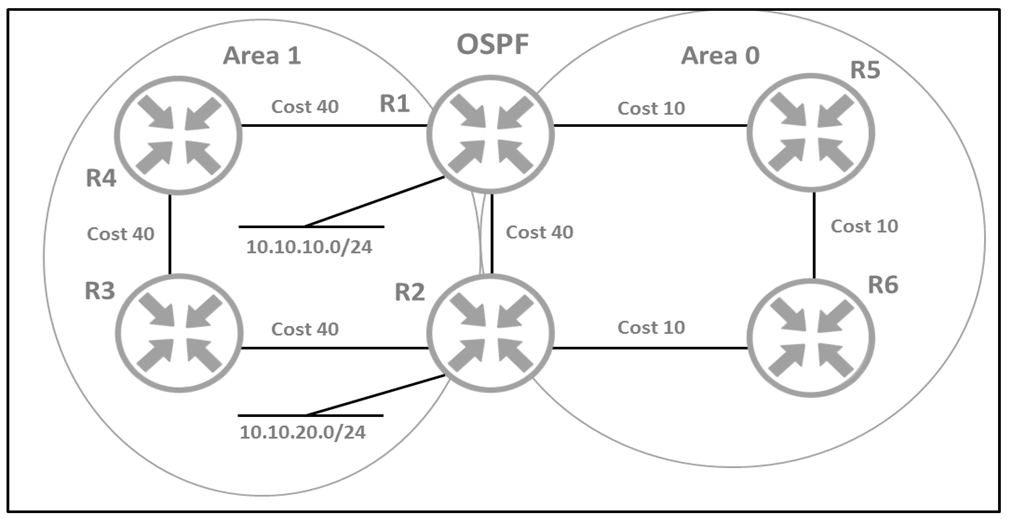
An architect must design a solution that uses the direct link between R1 and R2 for traffic from 10.10.10.0/24 toward network 10.10.20.0/24. Which solution should the architect include in the design?
A
Refer to the exhibit.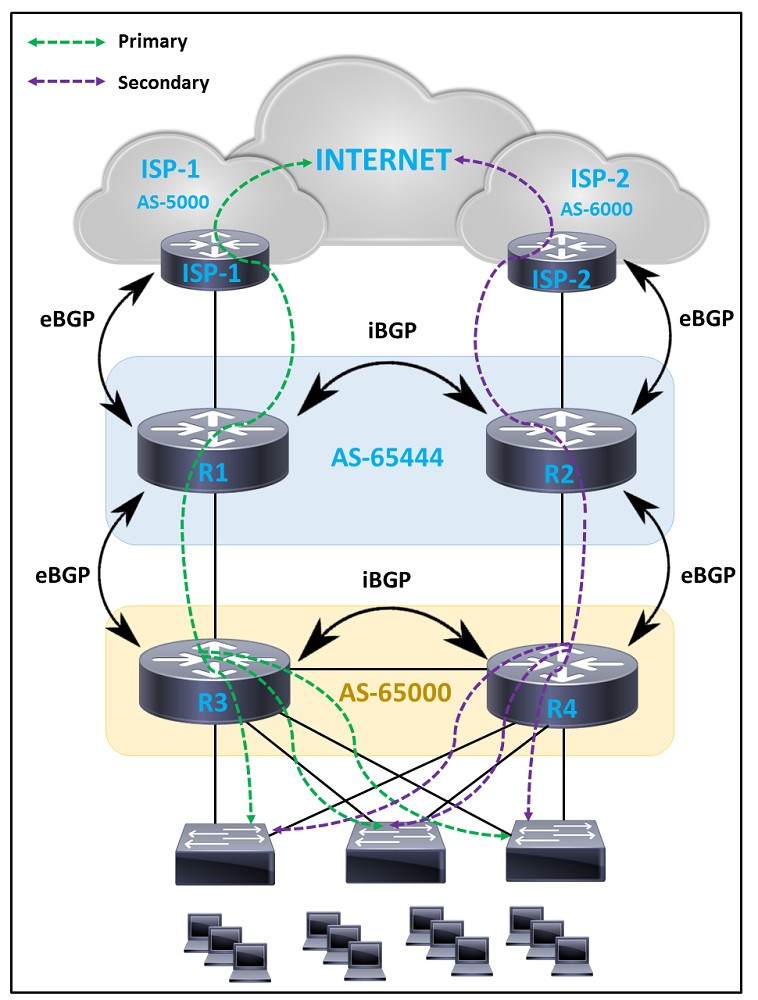
An engineer must design a WAN solution so that ISP-1 is always preferred over ISP-2. The path via ISP-2 is considered as a backup and must be used only when the path to ISP-1 is down. Which solution must the engineer choose?
B
Which feature must be incorporated into the campus LAN design to enable Wake on LAN?
B